Netgear ReadyNAS 422
Investing in big monolithic server technology may create an impressive machine room for the IT Department staff to hide. But, having all your computing eggs in a single basket doesn’t offer the flexibility of low maintenance NAS boxes, or the resilience of multiple smaller devices.
The Netgear ReadyNAS 422 is a classic example of a modern NAS device. Designed to be purchased for a specific job, but then repurposed repeatedly times over its working life.
Can this new series of ReadyNAS hardware truly take on Synology in that slice of the market where it is strongest?
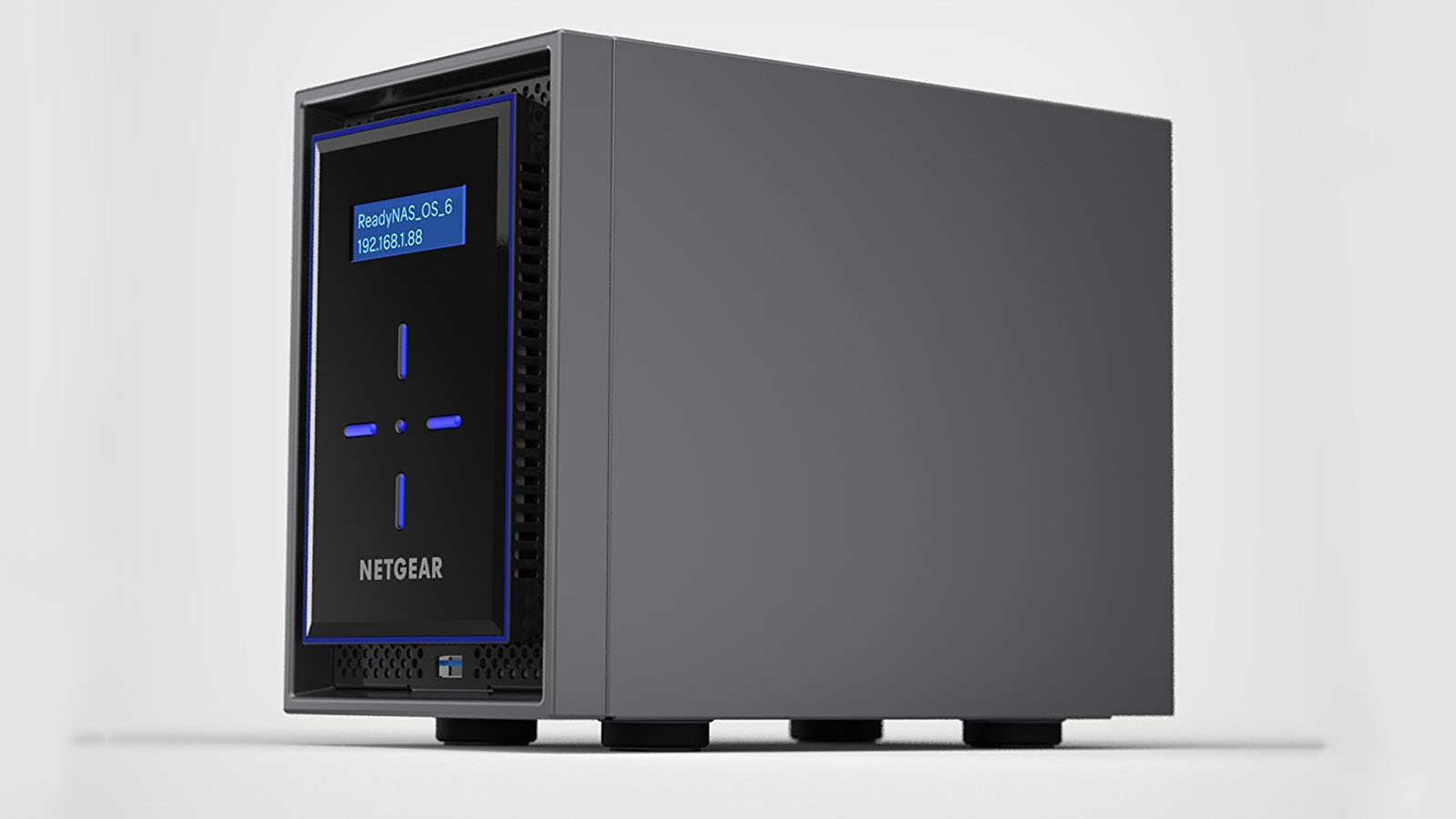
Price, availability and value
The RRP price for the Netgear ReadyNAS 422 without drives in the UK is £474.94 ($529), although we found it on Amazon discounted to just £326.20 in the UK, and $338.86 stateside.
That compares very favourably with Synology DS718+, a dual drive business NAS that sells for roughly £400 ($399).
However, the DS718+ can have its RAM upgraded and includes a quad-core CPU that can transcode 4K video in real time.
For a business focused NAS, the RN422 is worth what Netgear is asking, although you need to budget substantially more as it comes without any drives. A pair of 4TB NAS drives could easily double the total overlay, and anyone wanting to install 10TB NAS drives could be looking at a total outlay over £850 ($1,000).
Netgear pre-installs drives in a range of sizes, or you can purchase it ‘barebones’ and provide storage independently.
The available models include a 2x3TB, 2x4TB, 2x6TB with desktop drives and the latter two capacities using Enterprise spec storage. Therefore, those wanting dual 1TB, 5TB, 8TB or 10TB drives will need to go the barebones route.
We assume it would work with the new 12TB Seagate IronWolf and WD Gold drives too, but we can’t specifically confirm that.
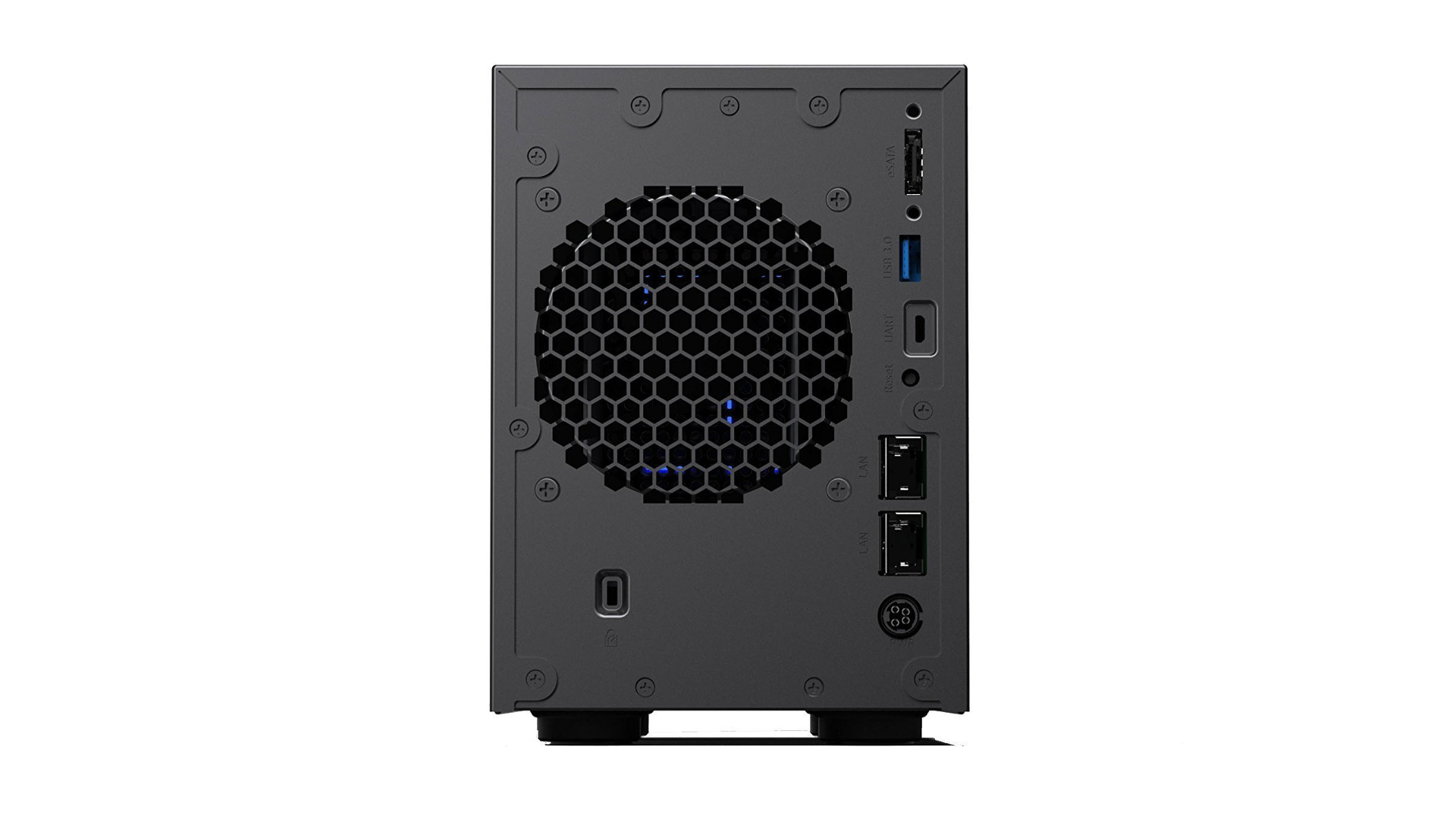
Design
Lifting the ReadyNAS 422 from its protective packaging, we assumed that the review hardware had pre-installed drives.
We were wrong, as it was the barebones option. The RN422 is over-engineered to the point that it feels heavy even before drives are mounted. The shipping weight of the NAS with the various cables and documentation is 5.1kg (11.2lb), and the NAS box alone without a PSU is responsible for 3.5Kg (7.7lb) What abuse this box was meant to withstand we’re unsure, but if we heard a rumour that Volvo was involved in this chassis design, we’d believe it.
The look that Netgear is pitching with the new ReadyNAS series is a minimalist one with a twist of functionality. The facia is hinged on the left and opens to reveal the two internal drive bays that allow either 2.5-inch or 3.5-inch drive to be quickly mounted. The larger drives don’t require any tools to install, but you will need a screwdriver for 2.5-inch hard drives or SSDs.
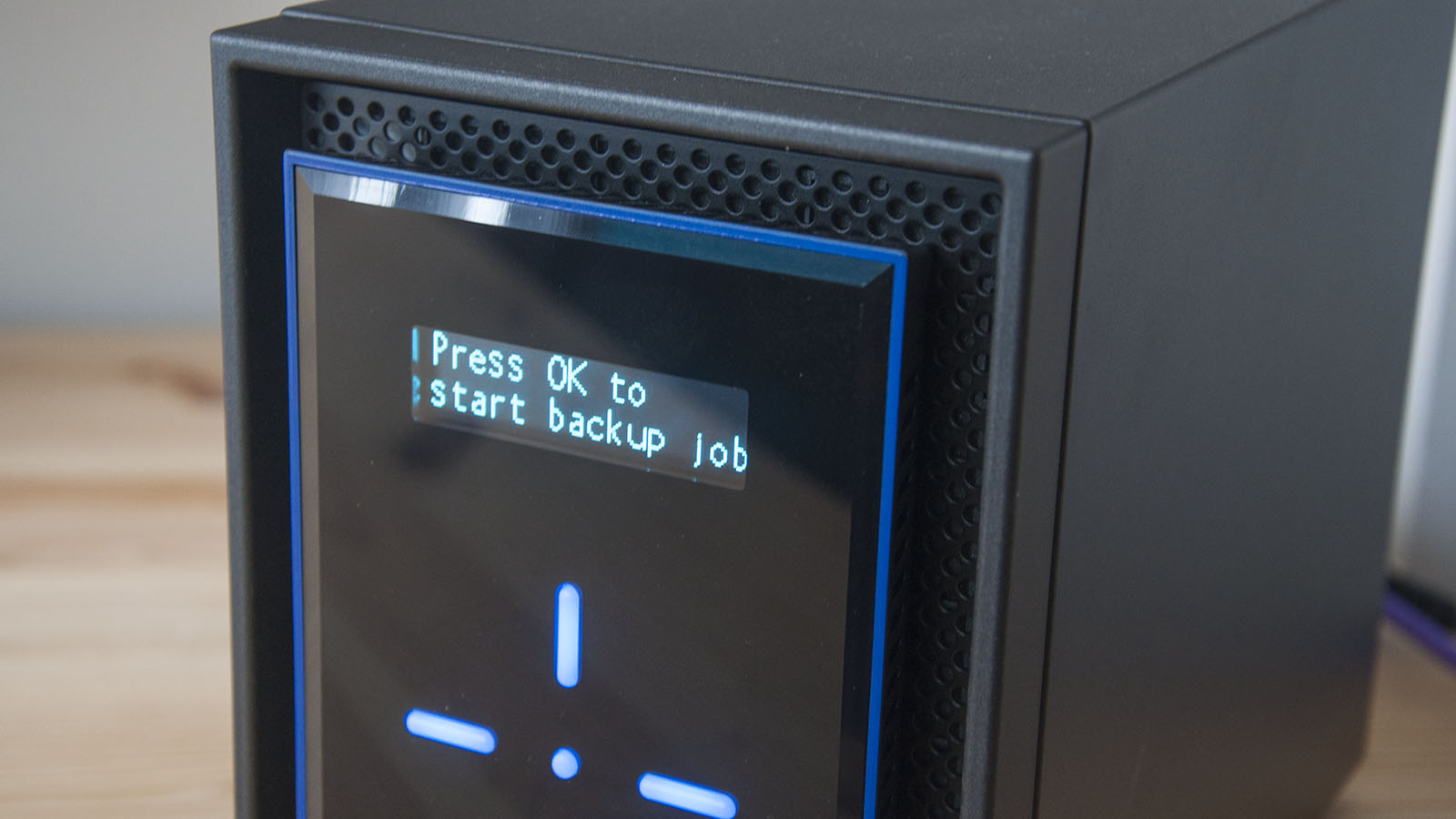
For connecting external devices one USB port is at the front under the door, and the other USB 3.0 is at the back, along with a single eSATA port. We’re not sure that eSATA is a technology that has a big future, and wonder if a Thunderbolt 3 port using a Type-C port would have been a better choice.
The door has a 2-line LED display that is also a menu accessed with the five illuminated buttons on the door face.
As with all NAS boxes these days, the main administration of the device is via a web interface. But the display could be useful in the event of hardware issues that aren’t allowing network access, or merely to identify the specific IP, if you have numerous ReadyNAS boxes.
We’ve noticed that many of the better NAS brands have started to move away from ARM SoCs in all but entry-level products, and instead use low-end repurposed PC parts. The RN422, and its RN424 brother, both use the Intel Atom C3338 1.5GHz Dual Core Processor and 2GB of DDR4 RAM. There aren’t any access panels to allow a user upgrade of the memory, and going inside we didn’t encounter any memory module slots to expand the surface mounted memory on the mainboard.
Having these upgrade possibilities is always nice, but the RN422 performs fine with the memory it was given.
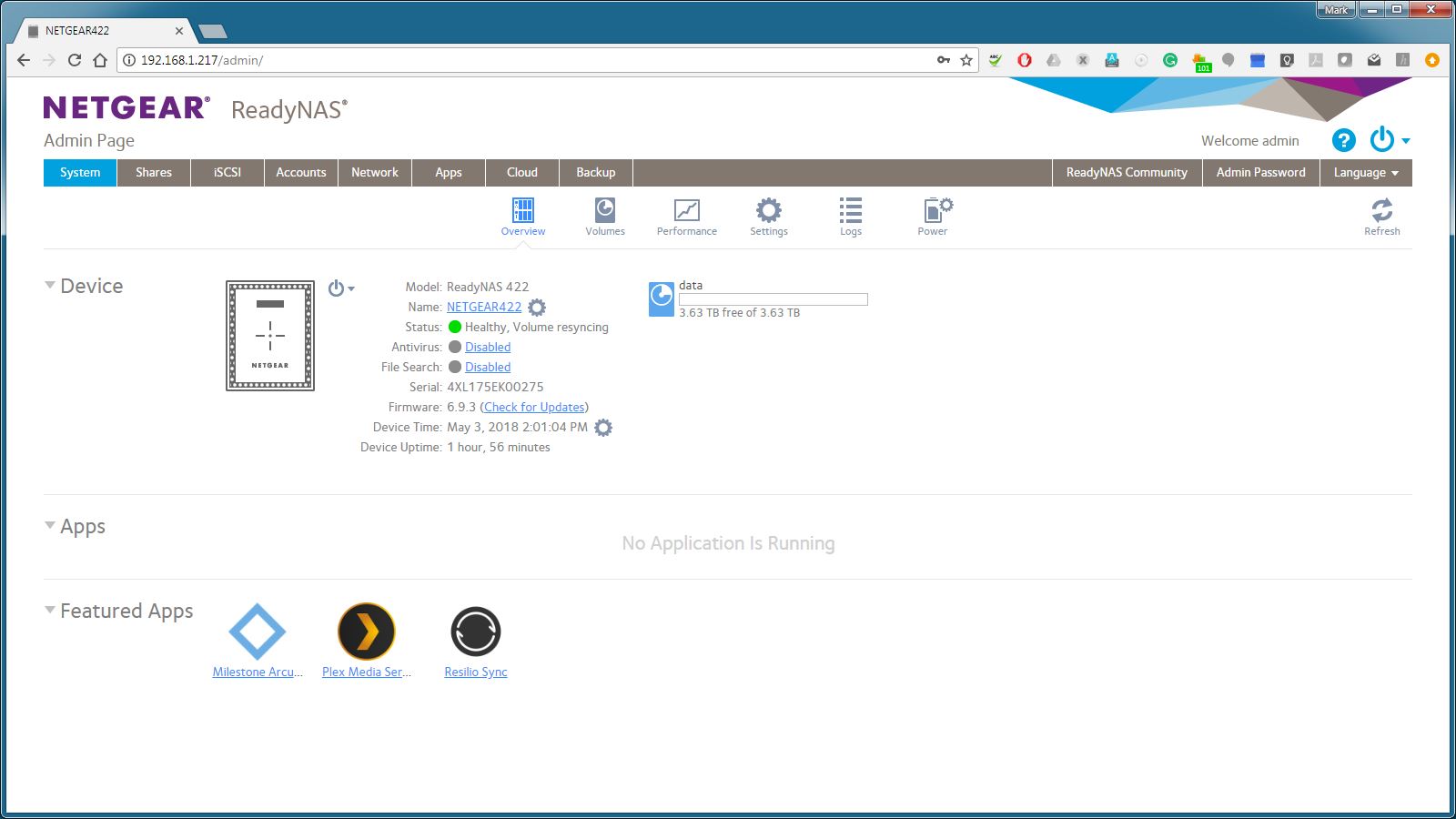
User experience
Overall, the ReadyNAS 422 delivers a good owner experience. However, it did make us jump through a couple of slightly annoying hoops early on. The first of these involved a PC application called RAIDar that allows you to locate a ReadyNAS box on the network and initiate the process to make it useable.
Our problem with RAIDar is that it requires a Java runtime installation to be available, an extra task to install, and something that some IT admins won’t be keen to put on their systems.
Using any technology that Windows users have installed by default would have been preferable to invoking Java. As an alternative, you can use the Netgear ReadyNAS web portal, though we had issues with that, something that isn’t uncommon. Once past that stage, things went well until we entered the web interface to be told that system performance would be degraded while the drives ‘synced’.
The news confused us entirely. As not just two minutes earlier we’d sanctioned that the two IronWolf NAS drives we used could be formatted, so they contained absolutely nothing to sync!
The sync routine took 8 hours to convince itself that two drives that it just formatted were equally empty, amazingly. There may have been a perfectly good reason why it did this, but we received no explanation from the system for a job that took a third of a day for what seemed utterly pointless.
With that exercise out of the way, the RN422 became as slick to use and administer as the very best competitor devices, namely those made by Synology and QNAP.
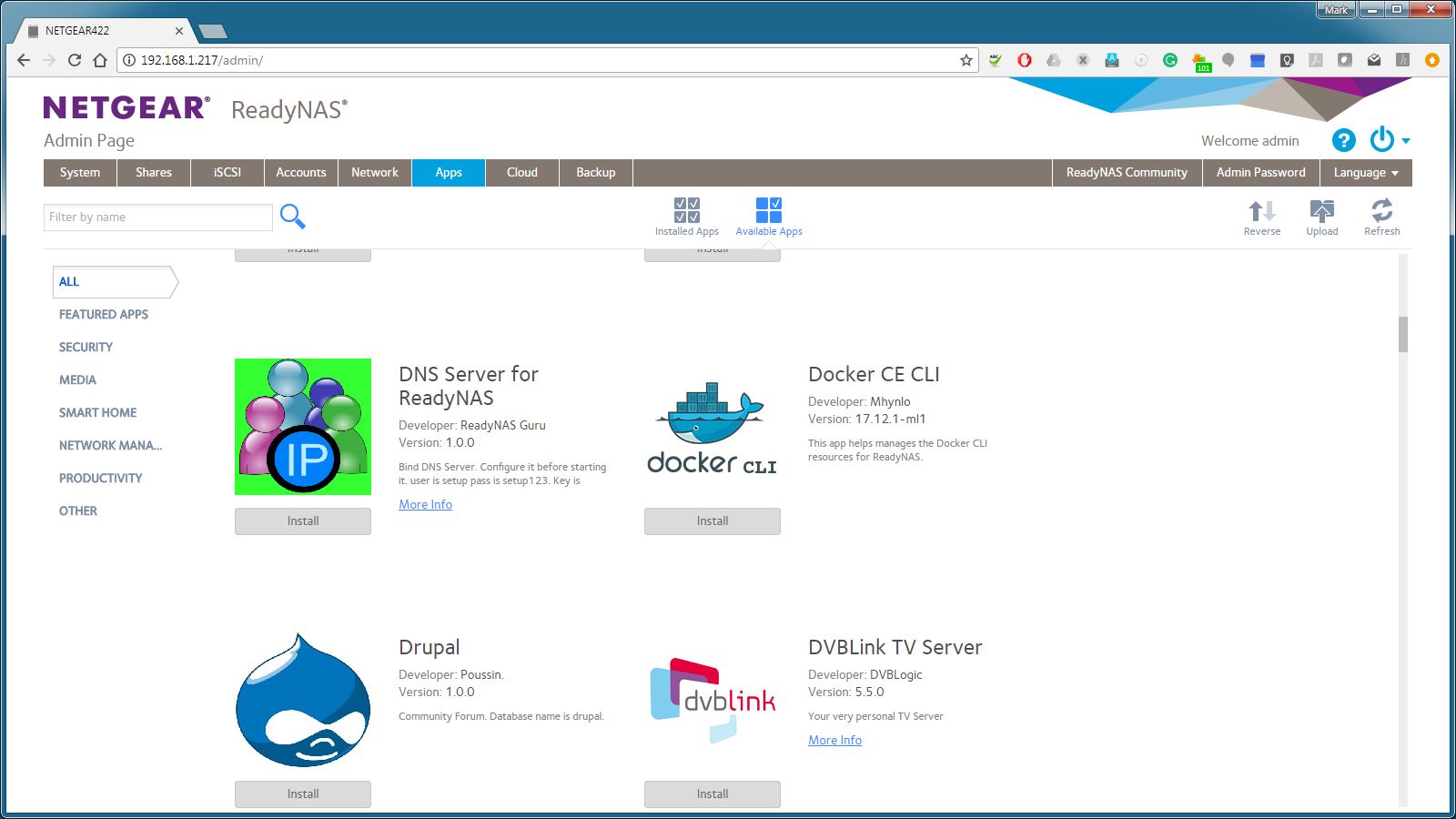
Apps
For those wanting to lock horns with Synology NAS products, the true battleground is app section. And, Netgear has made the biggest improvement in this part of the ReadyNAS offering.
The app collection of 63 tools doesn’t outnumber the choice Synology gives, but contains much of the same functionality, and even overlapping apps.
Drupal, IDrive, GLPI, Joomla, LimeSurvey, Logitech Media Server, PHP, Python and SugarCRM are on both platforms, and many other apps have practically identical functionality.
Both support Docker development, configured as a local DNS server or an automated Torrent client. There are relatively few places these machines exclusively own, and for an admin with Debian experience, there are few practical limits to what you can do with the RN422.
The total number of apps listed is also slightly misleading. As the RN422 has more functionality integrated into the ReadyNAS OS that is loaded on a Synology NAS as an app.
A good example of this is the iTunes Server, part of the standard services on the RN422, but an installable app on Synology DSM.
Support for Cloud services is also very good on Netgear, with ten extra apps for working with ReadyCLOUD, ReadyNAS Vault, ReadyNAS Replicate, Google Drive, Amazon Drive, Amazon S3, Dropbox, Microsoft Azure, Microsoft OneDrive and Wasabi.
The only significant hole that we’ve noticed is that there isn’t currently a Mail Server in the selection, and WordPress is also missing in action. It also has some apps that probably need removing, like DVBLink TV Server. This app recently ended development and has now been superseded by TVMosaic, a new solution.
On the flip-side of those omissions, the RN422 does have Plex, MySql Server and Twonky Server in its team. One strong aspect of the feature base is the backup controls that allow you to create an elaborate multi-layered plan to secure the contents of the system and any network storage in its vicinity.
It can back up to or from Windows machines, NFS, FTP and any system that supports Rsync. A backup routine can secure files to internal storage, external storage or a wealth of Cloud options. And on this NAS model, a snapshot capture system ReadyDR is also inbuilt, that could be very useful as part of a disaster recovery plan.
Overall, as an alternative to Synology, QNAP, Asustor or one of the other top NAS brands, the Netgear ReadyNAS 422 is a viable option and not in the least a poor cousin.
Specifications
It is important to realise that the bigger RN424 design has identical internal hardware and external ports. It differs only in the number of drive bays.
Those extra drive bays allow a total capacity of 40TB, and it can also offer RAID 5 resilience where only one drive’s capacity is sacrificed to make the pack able to handle a drive failing.
With only two drives the RN422 is limited in both capacity and resilience options, but there are plenty of roles where that wouldn’t be a significant limitation.
For a dual drive NAS, the RN422 is overpowered for simple file serving duties, giving it the extra horsepower to handle multiple jobs without hindering the file serving service.
Performance
With a dual-core Atom driving only a two drive NAS box, the limiting factor here isn’t CPU, memory or even hard drive speed, it’s the gigabit LAN ports. Netgear did include dual gigabit, and you can leverage those to double throughput by channel bonding or other aggregation methods.
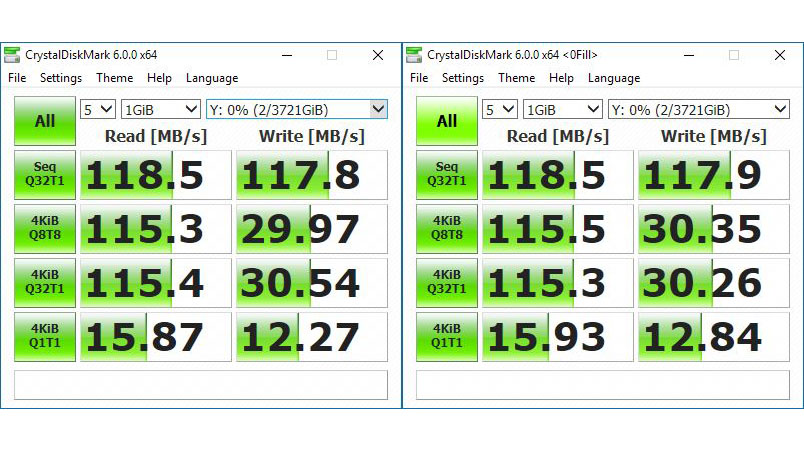
To get the most out of this scenario you’ll need a switch that can be managed to handle a dual line aggregation, and the extra performance will be spread over multiple users unless they are also using a dual channel bonding connection.
With a single Ethernet port connected and the drives in mirror mode, the system managed impressive 118.5Mb/s read, and 117.8Mb/s write speeds. With both LAN ports active that score increased to 200Mb/s and 185Mb/s, although that bandwidth was divided over two clients.
The four-bay RN424 might be a little faster in the dual LAN mode, because of the RAID layouts it has. But in the single LAN port scenario, there isn’t any more bandwidth in the network to effectively exploit and go any quicker.
You can use a Netgear EDA500, a 5-Bay ReadyNAS Expansion Chassis that connects via the eSATA port to add additional drives, but it would be cost effective to buy a system with more bays from the outset.
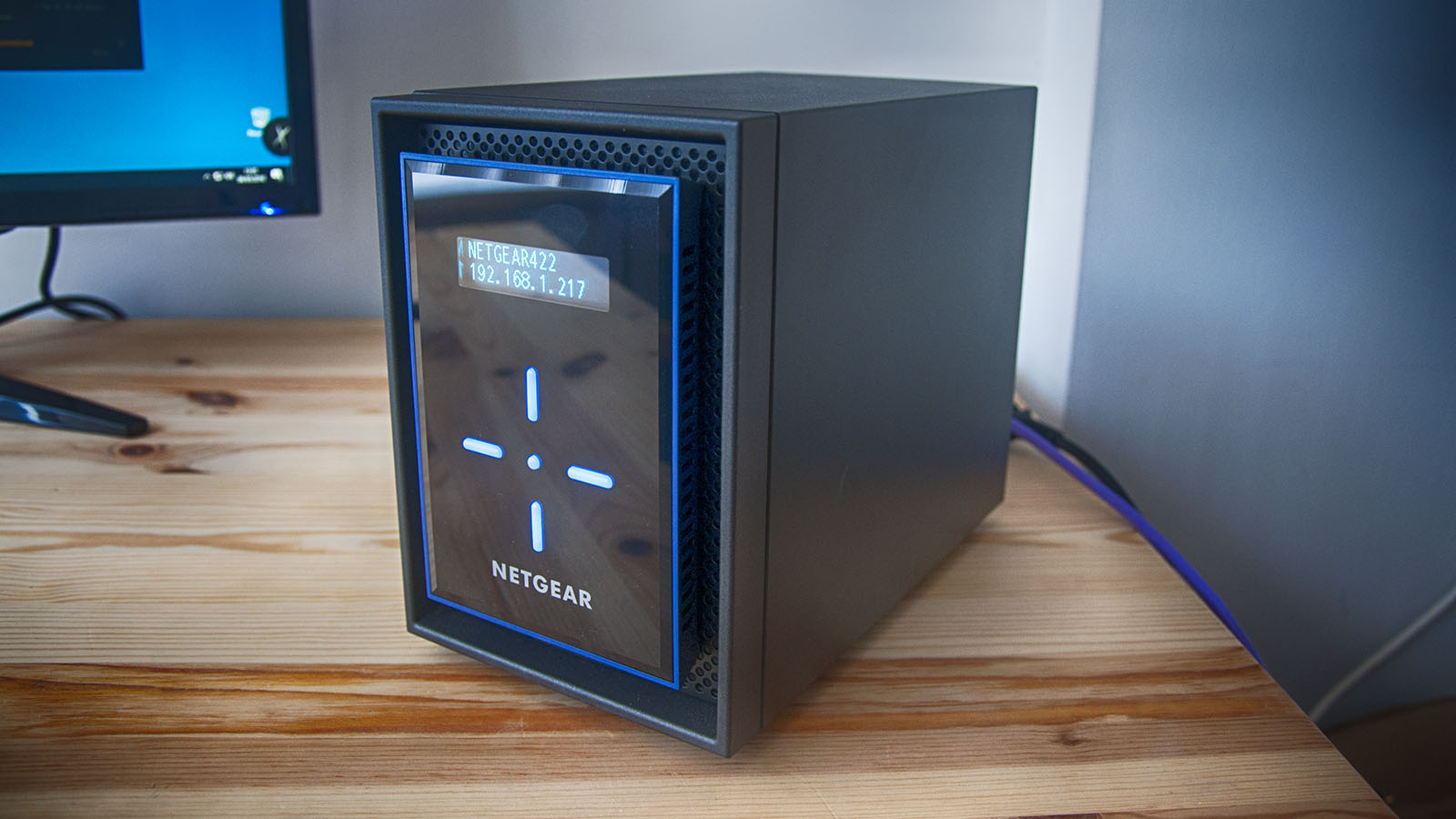
Final verdict
A very strong contender for best dual drive NAS box award. Netgear improved Ready NAS OS 6, and the hardware is now powerful enough to make the most of those enhancements.
It is hamstrung by having dual drive bays, but the bigger four, six and eight-bay models are there for those that need those greater capacities.
- Also take a look at the 10 best NAS devices
0 comments:
Post a Comment